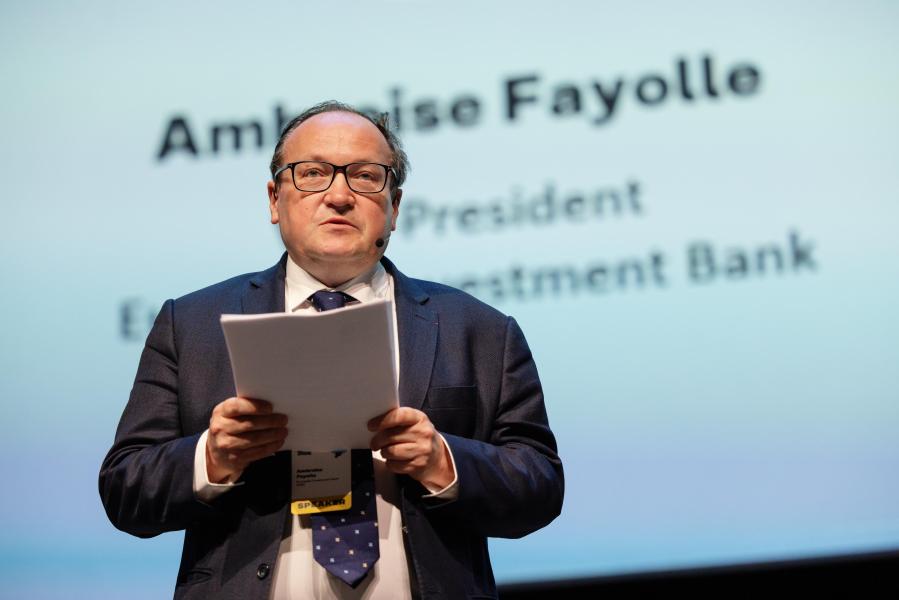Speaking at the multilateral development bank (MDB) event “Tracking adaptation finance in development projects” at COP28 on 10 December, EIB Vice-President Ambroise Fayolle stressed the importance of the joint MDB methodology for tracking adaptation financing to drive finance into adaptation projects. He welcomed the decision by the International Development Finance Club (IDFC), comprising 26 financial institutions, to join the methodology.
Follow our participation at COP28
Check against delivery

Ladies and gentlemen,
It is a great pleasure to be here today to welcome IDFC members as partners in applying a joint methodology for tracking adaptation finance.
Work on the joint methodology was launched by MDBs at Sharm Al Sheikh last year and we consider it a major step forward in creating a common language among a very large group of financial institutions.
Talking about a tracking methodology may sound technical but it is extremely important. It is about providing clarity on what adaptation activities look like and, in doing so, driving the finance to those that most need it.
Today, our experts will present our updated methodology and discuss challenges and opportunities for supporting countries, cities, businesses and people across the globe to adapt to the impacts of climate change.
The International Development Finance Club and multilateral development banks have financed climate change adaptation for many years. Together we provide the largest portion of overall adaptation finance. We have financed adaptation investments in a multitude of sectors, from protecting cities from the increased risk of extreme heat, to ensuring our critical infrastructure is adapted to our future climate, to developing new adaptation solutions. We have also deployed a variety of financial instruments to meet a wide range of adaptation needs, from the small incremental improvements in a road to a transformational investment to rethink the way water can be sourced, pumped and distributed in a country.
Tracking all this financing, however, is a challenge. This updated methodology, which provides definitions of adaptation investment that better reflect adaptation needs on the ground, will help us to be more robust, consistent and transparent.
Working together on this project has helped all of us involved to better understand how financial institutions can support adaptation and learn from each other. The more we share knowledge the more we create it. We would therefore like to encourage all financial institutions, both public and private, to provide project level data on their climate finance to our stakeholders and finance partners. This will help build the body of knowledge and help us all to learn from each other in what is a complex field. It will also strengthen trust with our client countries that what we call adaptation finance is based on robust delivery.
The update to the joint methodology for tracking adaptation finance builds on the great news that MDBs bring to this COP on climate finance. Our joint MDB report on climate finance in 2022 shows that we have once again exceeded our goals for adaptation finance. In 2022, MDBs provided €22.7 billion for adaptation, significantly more than the €18 billion we had hoped to reach by 2025. While this is encouraging and represents a significant step forward in meeting the ever-increasing needs for adaptation across the globe, we know that more, much more, still needs to be done to reach the scale that’s needed.
The EIB has been privileged to co-chair the MDBs’ working group on adaptation finance for the last three years, together with colleagues from the Islamic Development Bank. As we will be passing over to another MDB, I wanted to thank all the adaptation experts for their great work. I look forward to continuing to work with you and experts from the IDFC in the coming years.
In this context, let me also mention the very important work being done on metrics to measure adaptation results – you will hear more about this in a dedicated joint event, same time, same place.
To conclude, let me say that this joint effort is a great example of collaboration among public development banks. Public development banks have a key role to play in supporting vulnerable regions and communities to adapt to the impacts of climate change. By working together we can drive the finance needed to address climate vulnerabilities. I wish you a great discussion today.